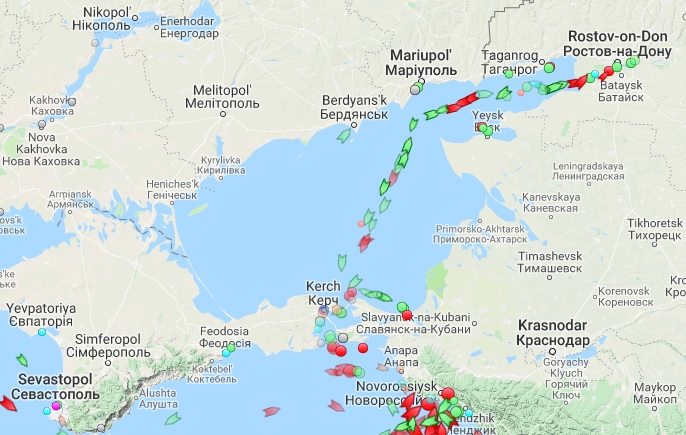Russian Foreign Minister Sergei Lavrov has said Russian President Vladimir Putin will agree to allow German and French specialists to monitor the Kerch Strait between the Black and Azov seas, following an official, written request from German Chancellor Angela Merkel.
At a Jan. 18 press conference in Moscow, after meetings with his German counterpart Heiko Maas, Lavrov said that Putin had “granted the request” but that Russia was unwilling to discuss any such plans with Ukraine.
Maas, who will head to Ukraine later on Jan. 18 to meet with Ukrainian foreign minister Pavlo Klimkin, said that “the free passage” of ships through the Kerch Strait “must be ensured,” adding that Russia should also release the captured Ukrainian soldiers that it holds.
According to Maas, such a monitoring mission from German and French specialists would be dependent on Ukraine’s agreement, as well as Russia’s.
In December 2018, the Russian government rejected a German proposal to deploy multinational monitors to the Kerch Strait and Azov Sea from the Organization for Security and Cooperation in Europe, or OSCE. That mission would have been tasked with monitoring shipping in the area and reporting on any interference with freedom of navigation.
Azov Sea blockade
Russia has been accused of a “slow strangulation” of Ukrainian and international shipping access to the Azov Sea, a body of water that the two countries are supposed to share, according to a 2003 bilateral treaty.
Experts and legal observers have also said that Russia is engaging in a creeping annexation of the Azov, determined to transform it into its own lake.
Live satellite feeds that track international shipping in and around the Kerch Strait and Azov Sea have painted a bleak picture throughout December 2018 and into January 2019. On any given day, dozens of ships are shown delayed on both sides of the Kerch crossing as they await Russian checks, security procedures and approval.
Satellite tracking also shows that the Ukrainian Azov ports of Berdyansk and Mariupol are all but empty, with only a handful of docked ships, and practically no shipping traversing across the Azov Sea to or from the Ukrainian ports.
Meanwhile, the Russian Azov Sea ports of Rostov-on-Don, Taganrog and Yeysk appear busier than ever, with a constant flow of shipping traffic in both directions, mostly Russian flagged ships.
Observers have said that the loss of economic activity from the Azov ports of Berdyansk and Mariupol is not only bad news for those cities and their regions, but the whole country too. With 30-40 percent of Ukrainian metal exports historically leaving the country from Berdyansk and Mariupol, according to experts, their effectual blockade is expected to begin causing serious harm to Ukraine’s economy.

A Jan. 18 screenshot from MarineTraffic, a wesbite that uses sattelite data to track ship movements, shows the lack of activity around Ukraine’s Azov Sea ports of Mariupol and Berdyansk but a steady stream of marine traffic to and from Russia’s Azov ports at Rostov, Yeysk and Taganrog.
